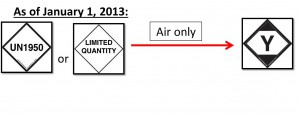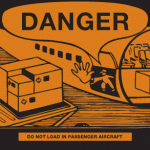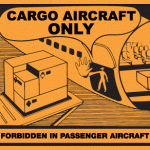It seems that as soon as you understand the regulations they change it. And that’s the case with several aspects of the Hazardous Material Regulations (HMR) that are scheduled to change as of this December 31st. This list does not attempt be be all-inclusive but it does summarize the big changes to the HMR to watch for in the new year.
- Change in the order of the basic description. After 12.31.12, the only acceptable order for the basic description when describing a hazardous material is: (1) Identification Number, (2) Proper Shipping Name, (3) Hazard Class, and (4) Packing Group. The old order, and still acceptable until 12.31.12, but not after is: (1) Proper Shipping Name, (2) Hazard Class, (3) Identification Number and (4) Packing Group. Notice that the Identification Number has been moved from 3rd to 1st in the order of the Basic Description, this was done to align domestic regulations with international and to make the Identification Number, which plays a key role in emergency response, more visible.
The order of the Basic Description acceptable only until 12.31.12:
The order of the Basic Description that must be used as of 1.1.13:
- End of Consumer Commodity shipments as an ORM-D by air. As part of its long-term phase out of the Consumer Commodity exception and the ORM-D hazard class, 12.31.12 is the deadline for use of this exception for shipments of hazardous materials by air. After this date a hazardous material that meets the definition of a Consumer Commodity and is to be transported by air must either be shipped according to the new Limited Quantity rules, or as a hazardous material subject to the full HMR. The purpose of this change is to align domestic and international regulations, since the Consumer Commodity Exception is not recognized in international transportation. The revision was designed to minimize the impact on shippers of Consumer Commodities, so it is likely that any HazMat you are currently shipping as a Consumer Commodity will be applicable for the Limited Quantity Exception which, other than its marking, differs little from the current Consumer Commodity Exception. Hazardous materials may continue to use the Consumer Commodity exception for shipments by ground or vessel until 12.31.13 (US DOT has requested an extension of this date to 12.31.15).
- End of the Limited Quantity marking for shipments by air. Along with the phase-0ut of the Consumer Commodity Exception referenced above the current Limited Quantity marking is being revised as of 12.31.12 to come into alignment with international regulations. After 12.31.12 the current Limited Quantity marking will no longer be acceptable for shipments by air of a hazardous material using the Limited Quantity Exception. Other changes to the regulation may affect other aspects of your Limited Quantity shipment as well.
- End of the “Danger” label for shipments of HazMat forbidden from transport in passenger aircraft. The purpose of this label is to alert shipping personnel to hazardous material packages that can not be loaded on a passenger carrying aircraft; they are required by IATA, ICAO, and US DOT regulations. The change (mandatory after 12.31.12) is being made to provide a better warning to HazMat Employees who may handle these packages.
Old label, valid until 12.31.12:
New label, must be used as of 1.1.13:
I’m sure there’s more, but these are the big ones I’m familiar with. Please feel free to contact me if you are aware of any impending changes to the regulations or have any question about how these changes may affect you. My training is a great way to learn the HazMat regulations and to get your questions answered. I also provide training for Hazardous Waste Personnel required by the US EPA.






